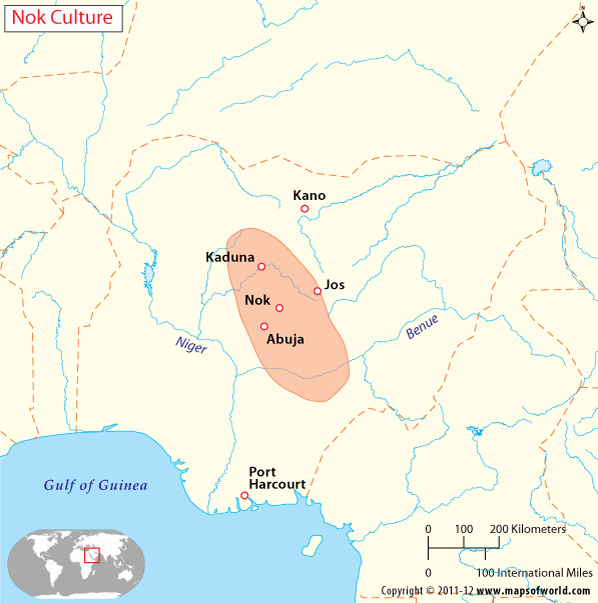The civilization, which flourished in and around Nok, a small village of Kaduna, Nigeria, is believed to have been the oldest society in the sub-Saharan regions of Africa. Evidence suggests that the Nok Culture existed in central Nigeria as early as 1000 BC.
The later Yoruba Civilization closely resembles the sociocultural organization of the Nok civilization.
Not much is known about the reasons for the disappearance of the Nok Culture. There is no evidence of its existence later than 350 BC. The culture could have been wiped out by natural calamities or the outbreak of ailments or by drought. Whatever the reason, the end of the Nok Culture was the end of one of the most advanced civilizations of ancient Africa.
Discovering Nok Culture
In 1928, Lieutenant Colonel John Dent-Young of England led a team of tin miners in the Jos Plateau of Nigeria. Terracotta animal figurines were found during these operations, though not much significance was attached to the incident. Later, in 1943, another team of tin miners hit upon a much larger collection of terracotta and clay figurines in the Nigerian village called Nok. Some of these were sculptures of animals, while some represented human figures.
Archaeologist Bernard Fagg enlisted the help of the miners, and the locals to put together a collection of over a hundred and fifty such pieces. When more terracotta sculptures were found all across the Jos Plateau, historians inferred the existence of the civilization that they named after the village Nok.
Nok Art and Sculpture
Much has been discovered about the Nok Culture by archaeologists. The dig sites at Samun Dukiya and Taruga have provided archaeologists reliable evidence to the dates of the Nok Culture artifacts. Thermoluminescence testing has revealed that the terracotta sculptures found at Nok may have been created between 500 BC and 200 BC.
Most of the sculptures found in the region are hollow and made from locally available clay. The figurines, both human and animal, have large heads and were coated with a slip to give them a glossy finish. Detailed depiction of the jewelry, clothes, and sharp features provide uncanny insight into the people of Nok society. In addition to the terracotta sculptures, a number of iron tools and implements were also found at the dig sites.

 Helladic Civilization
Helladic Civilization